The Legacy of Osamu Tezuka and Katsuhiro Otomo in Modern Sci-Fi Manga
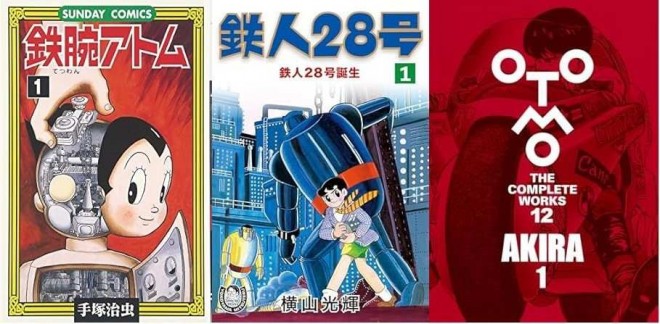
Osamu Tezuka, Mitsuteru Yokoyama, and Katsuhiro Otomo—these are the titans who redefined manga, ushering in storytelling so impactful that their names mark a clear "before and after" in the medium's history. Their visionary contributions led to manga’s unique evolution in Japan, eventually becoming known internationally as “MANGA”—a distinct genre of its own. Today, their influence can be seen in current hits, including recent nominees of the 4th Magademy Awards, proving that their creative torch still burns bright. Let’s take a closer look at how these pioneers changed the course of manga and how that legacy lives on in modern series.
Osamu Tezuka: Rewriting the Rules of Manga
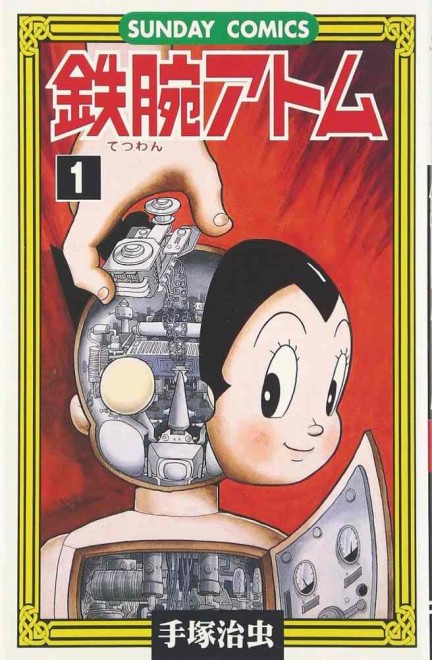
Astro Boy Manga cover
Osamu Tezuka, often referred to as the "God of Manga," revolutionized Japanese comics by pioneering long-form narratives. Among his countless achievements are the sci-fi trilogy Lost World, Metropolis, and NextWorld, the early shoujo manga Princess Knight, and the sprawling life-themed epic Phoenix. His iconic Astro Boy reimagined the human-robot relationship. Tezuka introduced literary depth to a medium once defined by gag comics, turning manga into a storytelling powerhouse that would one day be embraced worldwide under the name “MANGA.”
Mitsuteru Yokoyama: Expanding the Genre with Innovation
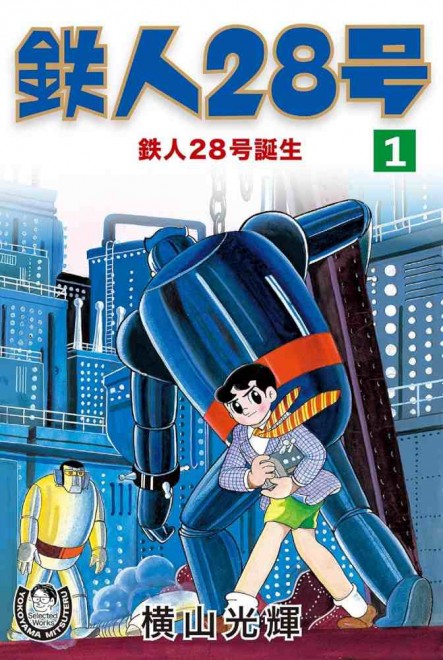
Tetsuji 28-go Manga cover
Mitsuteru Yokoyama created Tetsujin 28-go, a giant robot manga that stood toe-to-toe in popularity with Astro Boy. While Go Nagai would later pioneer the piloted mech genre, it was Yokoyama’s work that laid the foundation for the rise of robot-based stories. His diverse portfolio also includes Sally the Witch, considered Japan’s first magical girl anime, Iga no Kagemaru, which helped define battle manga, and his magnum opus Romance of the Three Kingdoms, which set the standard for historical epics in manga. His contributions greatly expanded the possibilities of story, theme, and visual style in the medium.
The Turning Point: Otomo and Realism
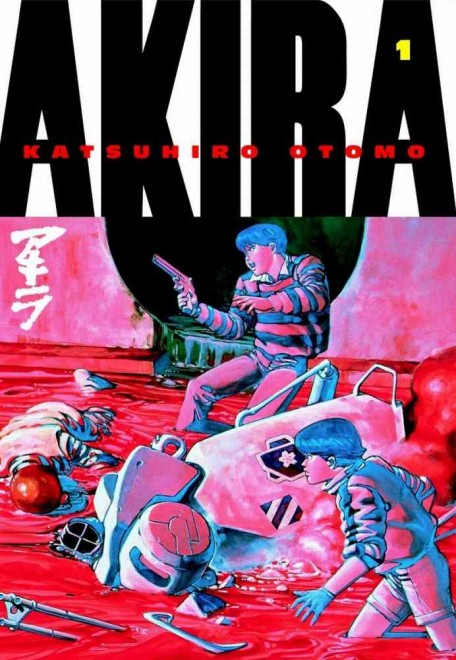
AKIRA Manga cover
From the gekiga boom spearheaded by artists like Sanpei Shirato came a wave of realism. But it was Katsuhiro Otomo who truly redefined the look and feel of manga. Inspired by Astro Boy and Tetsujin 28-go in his youth, Otomo’s work is so influential that the phrase “pre-Otomo vs. post-Otomo” has entered the critical lexicon. With architectural precision and realistic human anatomy, he introduced spatial depth and a three-dimensional sense of design to manga, particularly in AKIRA. By embedding sci-fi and the occult into everyday settings, Otomo elevated the realism of fantastical elements, fortifying manga’s identity on the world stage.
Modern Heirs of the Manga Flame: Thunder 3
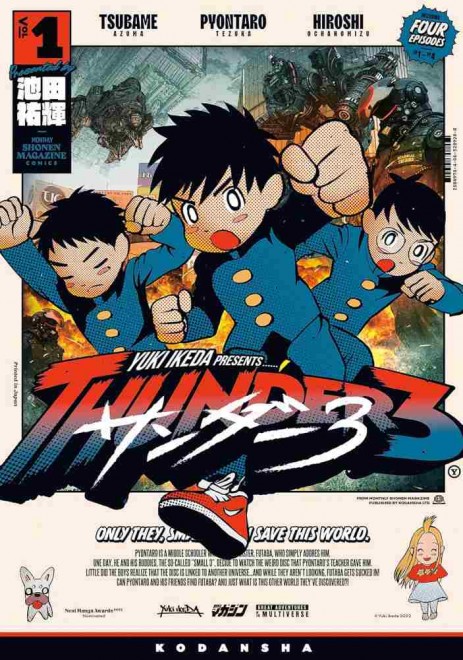
Thunder 3
Among the 4th Magademy Award nominees, Thunder 3 (Kodansha, by Yuki Ikeda) stands out in the "Best Worldbuilding (設定賞)" category. The manga blends Tezuka’s symbolic character design with Otomo’s realism. The story follows Pyontaro, an ordinary boy, who borrows a mysterious disc that connects to another dimension. When launched via a PlayStation 5, it transports him and his friends into a hyper-realistic world reminiscent of Hiroya Oku’s GANTZ.
Though depicted with comical features, the boys possess superpowers as "inhabitants of the manga world," enabling them to fight alien invaders. The striking contrast in art styles creates a visual dissonance that only manga can achieve.
Media scholar Shinichi Kinuwa notes, “Tezuka proposed the concept of ‘manga symbols’—designs reduced to symbolic elements like facial expressions or hairstyles, much like radicals in kanji. Overused, these symbols can feel outdated, but Thunder 3 cleverly modernizes them. By placing them within a realistic world and giving them supernatural abilities, it recontextualizes their value.”
This approach recalls classic manga crossovers—like Dr. Slump’s Arale-chan in Dragon Ball—but Thunder 3 builds an entire narrative around this fusion. It’s a bold experiment in post-symbolic manga storytelling.
Political Intrigue in a Divided Japan: Nippon Sangoku
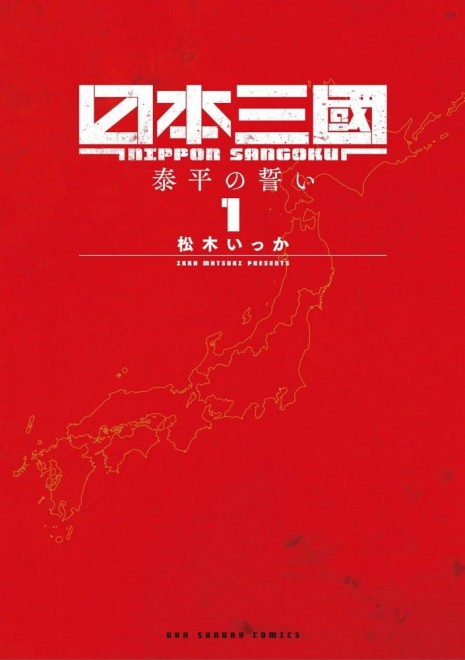
Next is Nippon Sangoku (Shogakukan, by Ikka Matsuki), nominated for "Best Story." Set in a post-apocalyptic Japan split into three nations—Yamato, Buou, and Seii—it echoes Romance of the Three Kingdoms and reimagines a futuristic war epic.
Rather than flashy battles, the manga unfolds from the perspective of military strategists, focusing on tactical warfare and political intelligence. As Iwa explains, “Like Yokoyama’s Three Kingdoms, this work captivates by introducing a multitude of unique, charismatic characters with clear roles. Readers are drawn into hypothetical clashes: 'Which general would win?' The cutthroat world of power plays and warlord rivalries has an enduring appeal, especially now when politics often trend on social media. Revisiting Three Kingdoms-like narratives is both nostalgic and timely.”
A Dark Flame of Revenge: Kagurabachi
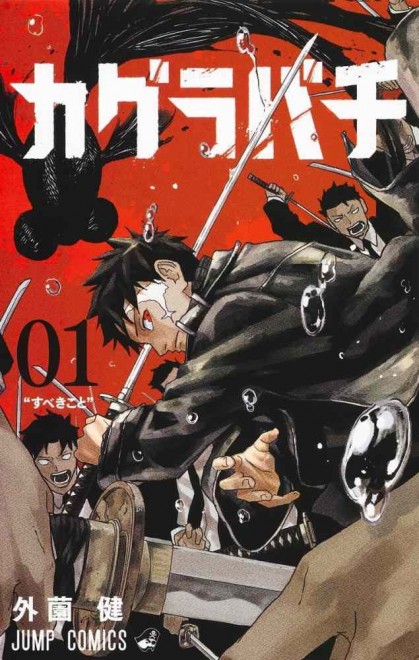
Kagurabachi
Finally, in the "Craftsmanship Award" category, we have Kagurabachi (Shueisha, by Takeru Hokazono). The story follows Chihiro, a young swordsmith-in-training whose peaceful days end in tragedy. With nothing but vengeance in his heart, he embarks on a quest driven by rage.
The manga features Hollywood-style pacing and stark, cinematic visuals. Though steeped in traditional fantasy elements—cursed swords, sorcerers—it maintains grounded realism through its intense, detailed artwork.
While Hokazono’s powerful art often takes center stage, Kinuwa reminds us that, like Otomo, his work begins with a compelling story. “In Kagurabachi, the narrative takes precedence. Rather than focusing on worldbuilding, the manga emphasizes vertical storytelling—momentum, emotion, and repeated lines from the protagonist’s father create a lyrical structure. This is something Otomo didn’t do, showing that Hokazono isn’t just inheriting his influence but evolving beyond it.”
The Eternal Flame of MANGA
As we’ve seen, the creative torch passed down from manga legends continues to inspire new generations. In acclaimed titles like Thunder 3, Nippon Sangoku, and Kagurabachi, the DNA of Tezuka, Yokoyama, and Otomo is strongly present. These modern works are more than just homages—they’re mutations, sparking new directions in manga’s ever-expanding universe.
Storytelling, design, visual language, and technique all evolve, but the flame—like an eternal Olympic torch—keeps burning. “Manga and anime have made many people overseas fall in love with Japan,” Kinuwa concludes. “There are countless foreigners who now view Japan positively because of MANGA. It’s time we officially recognized its role in cultural diplomacy.”
With that, the manga torch continues to burn—distinctly Japanese, singularly unique, and ever-advancing.
(By Toru Nishijima)
Source : ORICON NEWS
![[Editor’s Picks] CyberAgent’s Ambition: Launch of a New Anime Studio and M&A Expansion](/upimg/thumb/3000/3216/img280/apocalypsehotel.jpg)
![[Editor’s Picks] Crunchyroll Launches Manga App as Sony-KADOKAWA Alliance Unveils New Vision for Japanese Entertainment](/upimg/thumb/3000/3084/img280/CR_Manga_001.jpg)